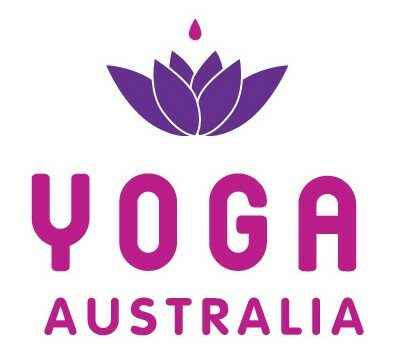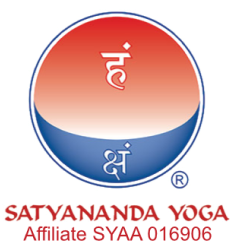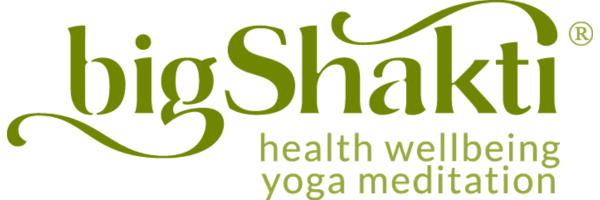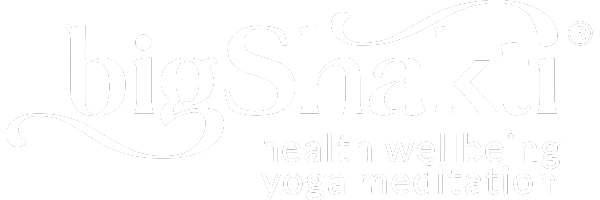Welcome to Big Shakti
We blend ancient yoga-tantra wisdom with modern depth psychology
to guide you toward profound physical, mental, and spiritual well-being.
Discover our expert-led meditations, courses, and teachings designed to empower self-awareness, resilience, and personal transformation. They help you reduce stress, increase vitality, and awaken your highest potential.
Whether you're a beginner or an advanced student, our experienced teachers, Dr. Swami Shankardev Saraswati and Jayne Stevenson will guide you on a transformative journey of self-discovery.
Our Accreditations
Big Shakti’s courses earn CPE points for Yoga Teachers and are recognized by the Yoga Alliance (USA) as Continuing Education (contact hours), Yoga Australia, Satyananda Yoga Academy, and SYTA (Satyananda Yoga Teachers Association) for Continuing Professional Development.





Teachers & Cofounders

Dr. Swami Shankardev Saraswati
Dr. Swami Shankardev Saraswati is a Western medical doctor, Yoga Acharya (authority), Yoga Therapist, psychotherapist, author, and teacher.

Jayne Stevenson
Jayne Stevenson, co-founder and Director of Big Shakti, is a counselor, dreamworker, and writer with a passion for healing and spirituality.
“It is immediately evident that Big Shakti offers us a deep understanding of ancient techniques, and somehow, they succeed in translating these complex movements for a practice that feels very friendly and doable upfront yet with a sense of depthless opportunity long-term. It is quite evident from the start that these techniques are truly effective. Having a "coach" of this caliber guiding me is a blessing.”
Jill Pederson
“Big Shakti's online programs are planned with extreme care and knowledge, and they are valuable tools for self-study. They are easy to follow, and they always make me feel like the teacher is in my mind, knowing my needs and what I want to explore. What I like most about Big Shakti's work is that they provide knowledge and experience in a structured way, with care, love, and empathy. It is like having a trusted friend who helps you when needed.”
Chrysa Apostolopoulou
“Big Shakti provides worldwide access to the kind of knowledge that is historically only available in a personal relationship with a master teacher. The programs are deeply enriching, and the energy generated is amazing. At the same time, it always feels personal, and Big Shakti is quick to respond to any question or concern. The study programs have been of immense value in my practice.”
Christine Brahmi Romero
About Us, Our Philosophy and Teachings
“Thankyou for always shining a guiding light for those of us who are at times searching in the darkness. I enjoy your practical and succinct explanations of what seem quite simple yet complex topics. Also, your meditations are phenomenal!”
Loretta White
“I purchased 4 of Big Shakti's guided meditation programs from the Atma Center in Ohio, USA, and am SO GRATEFUL!!! I CAN'T THANK YOU ENOUGH for the tremendous benefit I have gained from the meditations (after 15 years of practice--these are by far the BEST!)”
Tom Marx
“I would highly recommend anyone interested in yoga and personal growth attend a seminar by Swami Shankardev and Jayne Stevenson. One of the first things you notice is the wealth of knowledge and experience, delivered in a practical, "down to earth" manner. ”
Iain Bennett
LIVE ONLINE TEACHING
Yoga of Mental Health Workshops
MARCH-JUNE 2025
A four-part exploration of yoga’s profound impact on mental well-being. Designed for those seeking a deeper understanding of yogic philosophy, psychology, and practical techniques, this series integrates ancient wisdom with modern insights to support emotional resilience, self-regulation, and mental clarity.
Each session includes a teaching lecture, guided meditation, interactive Q&A, and a CPE certificate upon completion. Participants gain 24/7 online access to the recordings and resources after each live event.
This series is a unique opportunity to integrate yogic wisdom into your approach to mental well-being, whether for personal growth or professional practice.

Featured Learning & Practice
Yoga of Mental Health Workshop Bundle
Includes 4 Workshops
INSTANT ACCESS 🕉️ SELF-PACED
- Sāṃkhya Philosophy & Mental Health: A Yogic Path to Holistic Well-being (2 hours)
- Insights from the Gita & Patanjali: Uncovering the Roots of Mental Illness (2 hours)
- Restoring Self-Regulation: Yogic Techniques for Emotional Resilience & Inner Strength (2 hours)
- Mantra Therapy: Transforming Thought Patterns for Emotional Healing & Mental Wellbeing (2 hours)
Mantra Therapy: Transforming Thought Patterns for Emotional Healing & Mental Wellbeing
Yoga of Mental Health Workshop
Experience the power of mantra therapy in reshaping thought patterns, soothing emotional distress, and cultivating a positive mental state. Learn specific mantras and vibrational techniques to support mental clarity and emotional balance.
Includes Teaching Lecture, Guided Meditation Practice, Resources and CPE Certificate upon completion.
INSTANT ACCESS 🕉️ SELF-PACED
Restoring Self-Regulation: Yogic Techniques for Emotional Resilience & Inner Strength
Yoga of Mental Health Workshop
Discover practical yogic techniques to build self-regulation, manage emotions, and enhance inner stability. This session focuses on breathwork, meditation, and mind-body practices to strengthen resilience.
Includes Teaching Lecture, Guided Meditation Practice, Resources and CPE Certificate upon completion.
INSTANT ACCESS 🕉️ SELF-PACED
Uncovering the Roots of Mental Illness: Insights from the Gita & Patanjali
Yoga of Mental Health Workshop
Dive into the Bhagavad Gita and Patanjali’s Yoga Sutras to uncover the deeper causes of psychological distress. Learn how ancient texts offer practical strategies for overcoming inner struggles and fostering self-awareness.
Includes Teaching Lecture, Guided Meditation Practice, Resources and CPE Certificate upon completion.
INSTANT ACCESS 🕉️ SELF-PACED
Sāṃkhya Philosophy & Mental Health: A Yogic Path to Holistic Well-being
Yoga of Mental Health Workshop
Explore the foundational principles of Sāṃkhya philosophy and how they shape a yogic approach to mental well-being. Understand the interplay between consciousness, mind, and emotions to cultivate balance and insight.
Includes Teaching Lecture, Guided Meditation Practice, Resources and CPE Certificate upon completion.
INSTANT ACCESS 🕉️ SELF-PACED
Yoga Psychology Bundle
{All Levels}
3 Courses, 1 Meditation Bundle, 24 CPD Points
Introduction to Yoga Psychology & Psychotherapy Course
Facing the Shadow Course
Healing the Mind Course
Therapeutic Meditation Bundle (6 Guided Meditations)
TOTAL INCLUDED VALUE $440
TESTIMONIALS
TESTIMONIALS
What Our Students Are Saying
What Our Students Are Saying
Subscribe to our Newsletter
Get updates for new articles, courses, and products and get 15% OFF coupon code for our online store.







